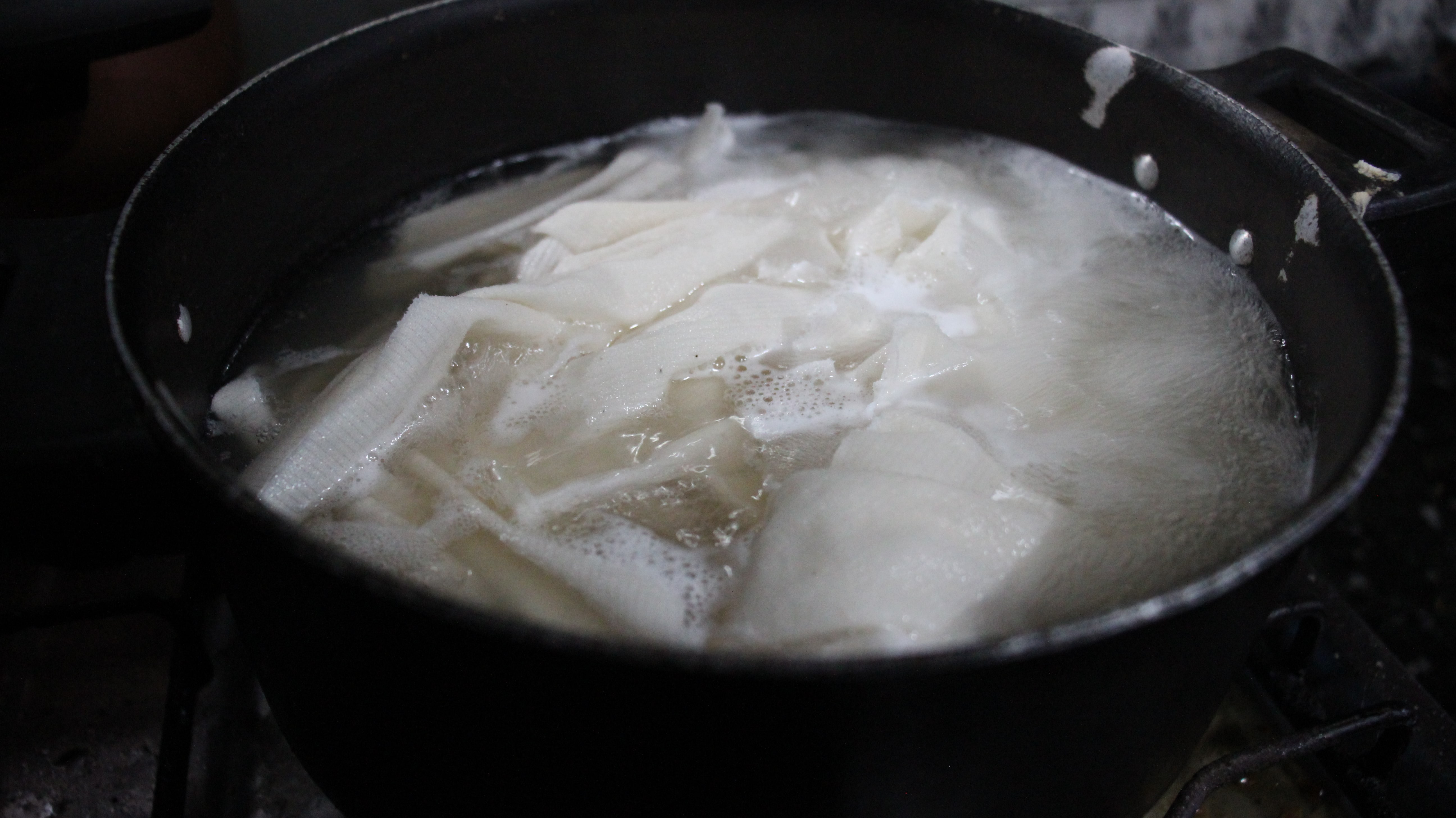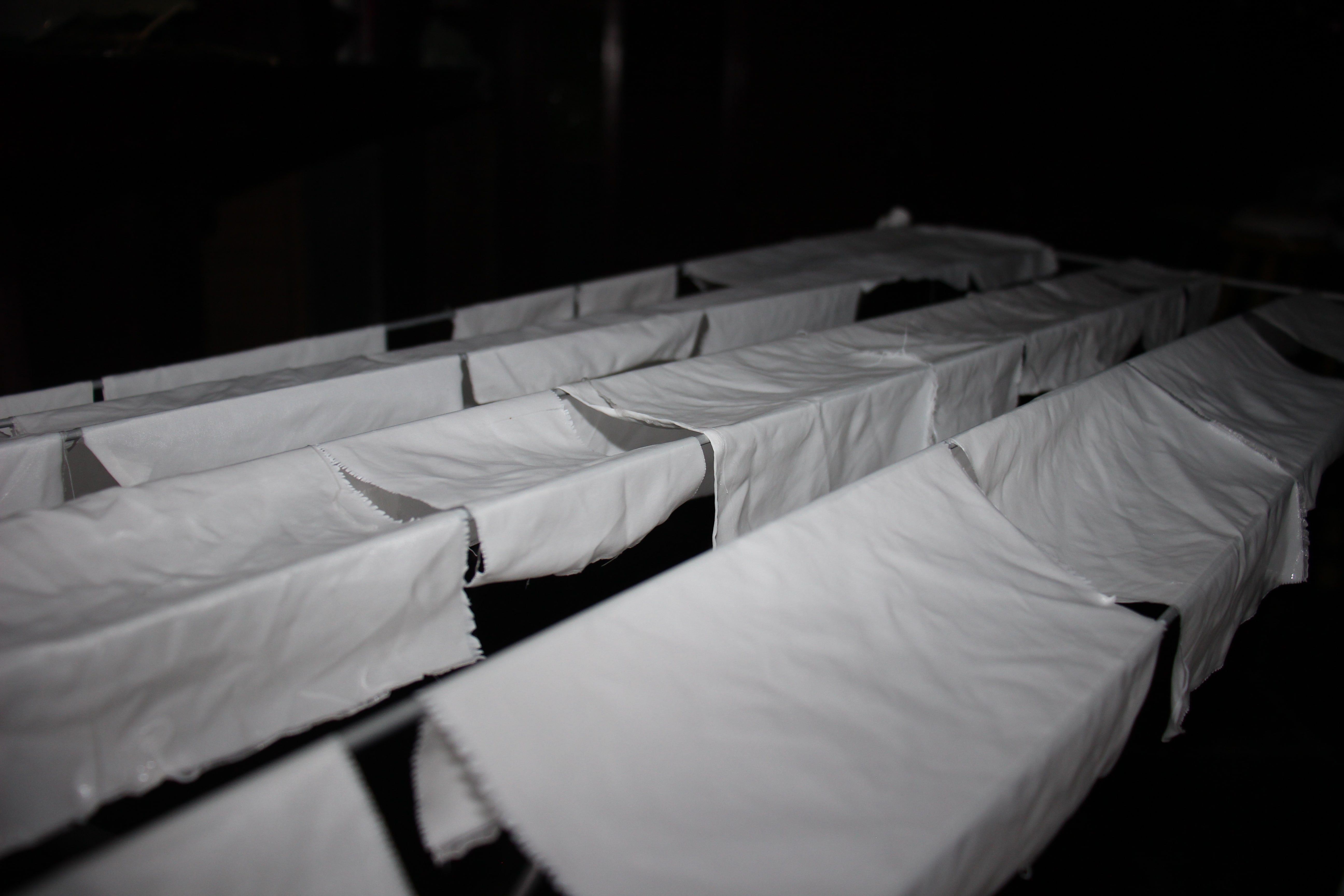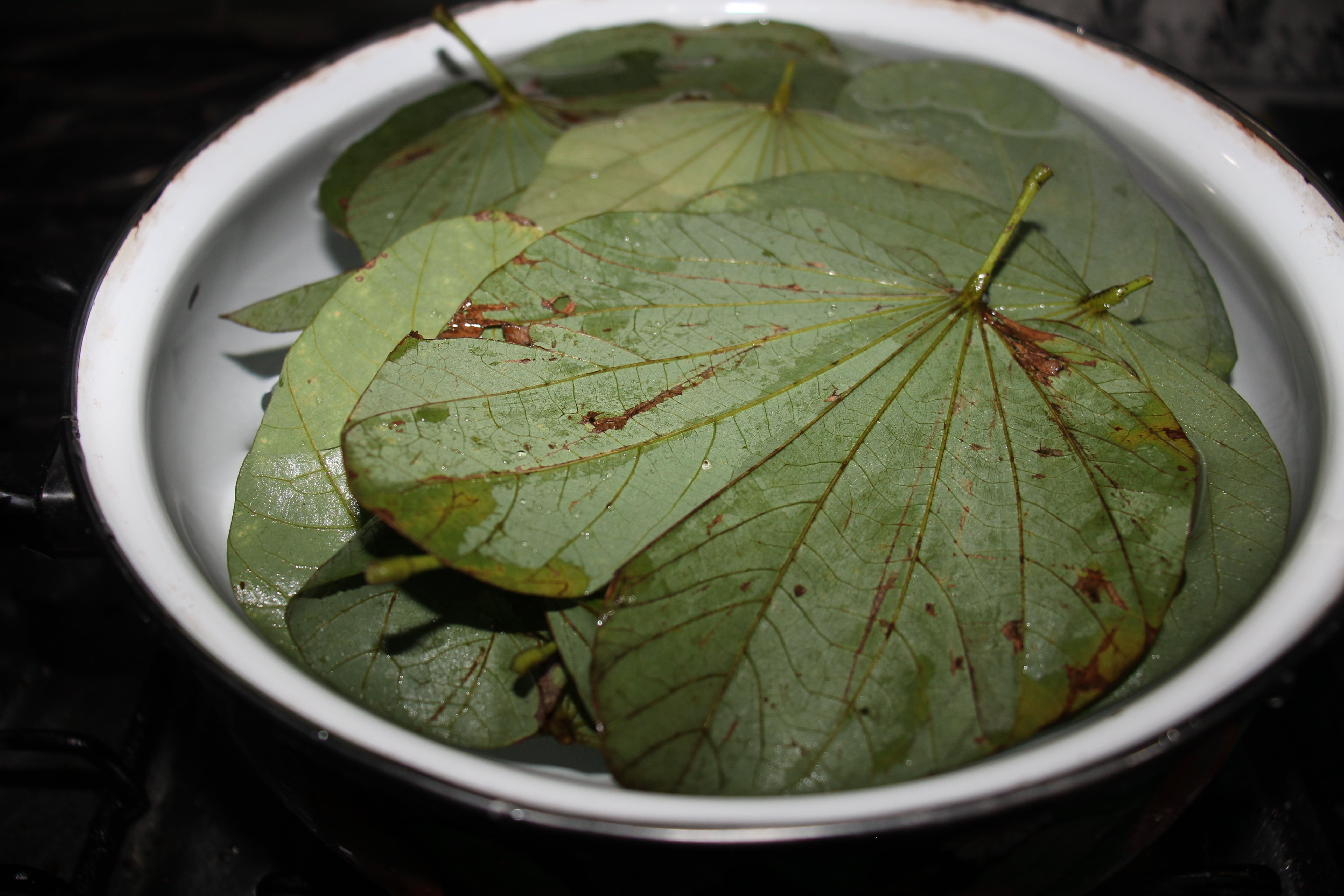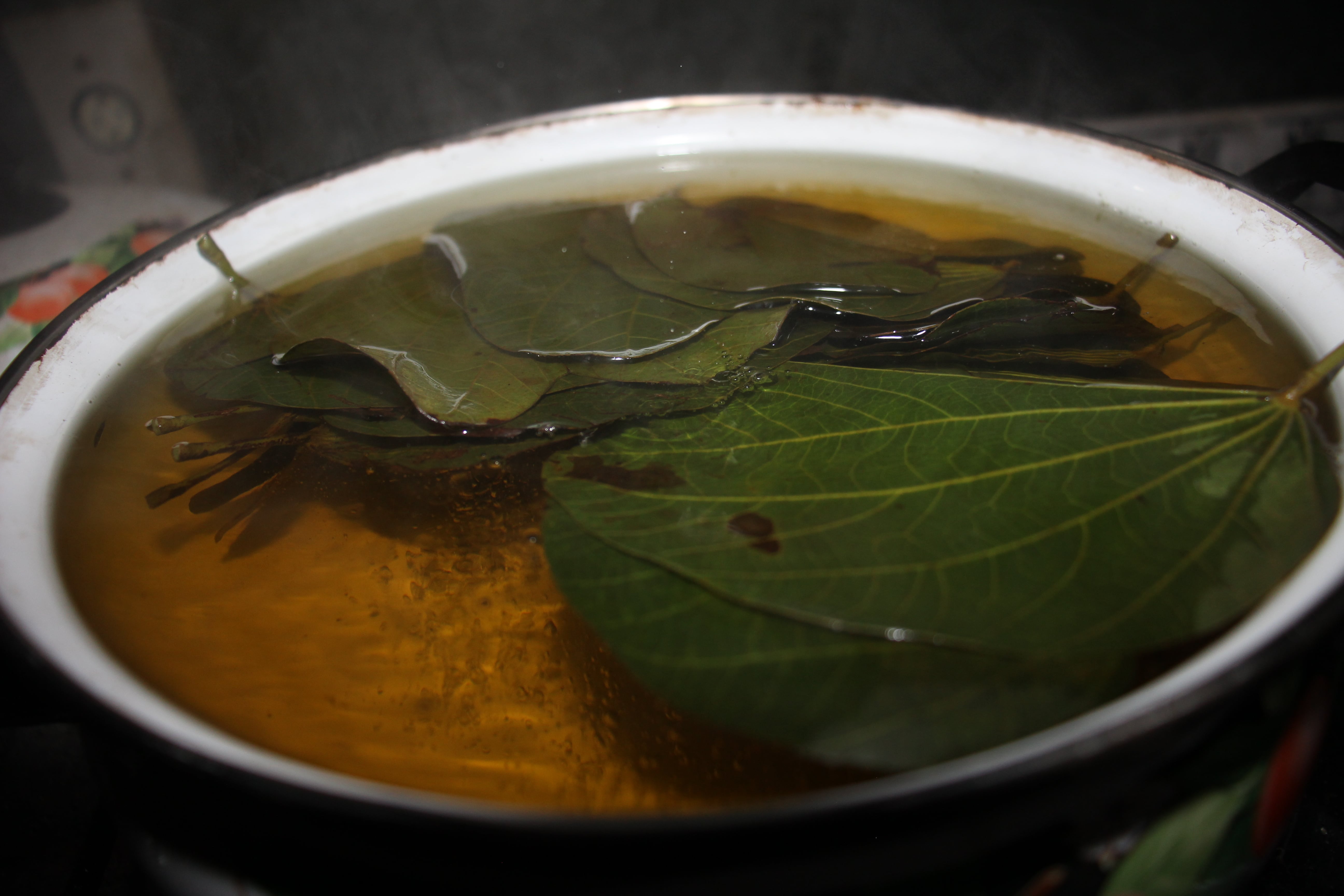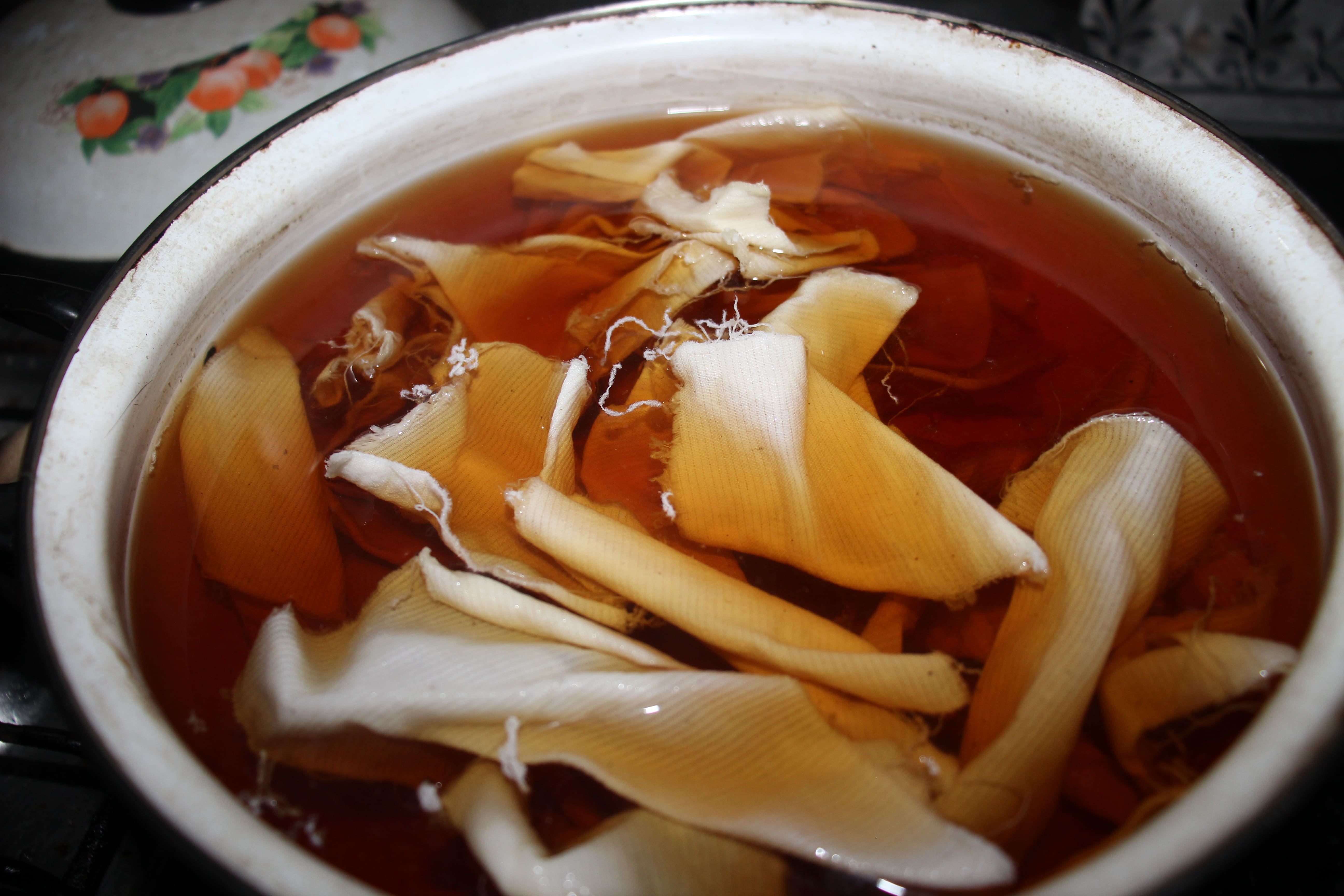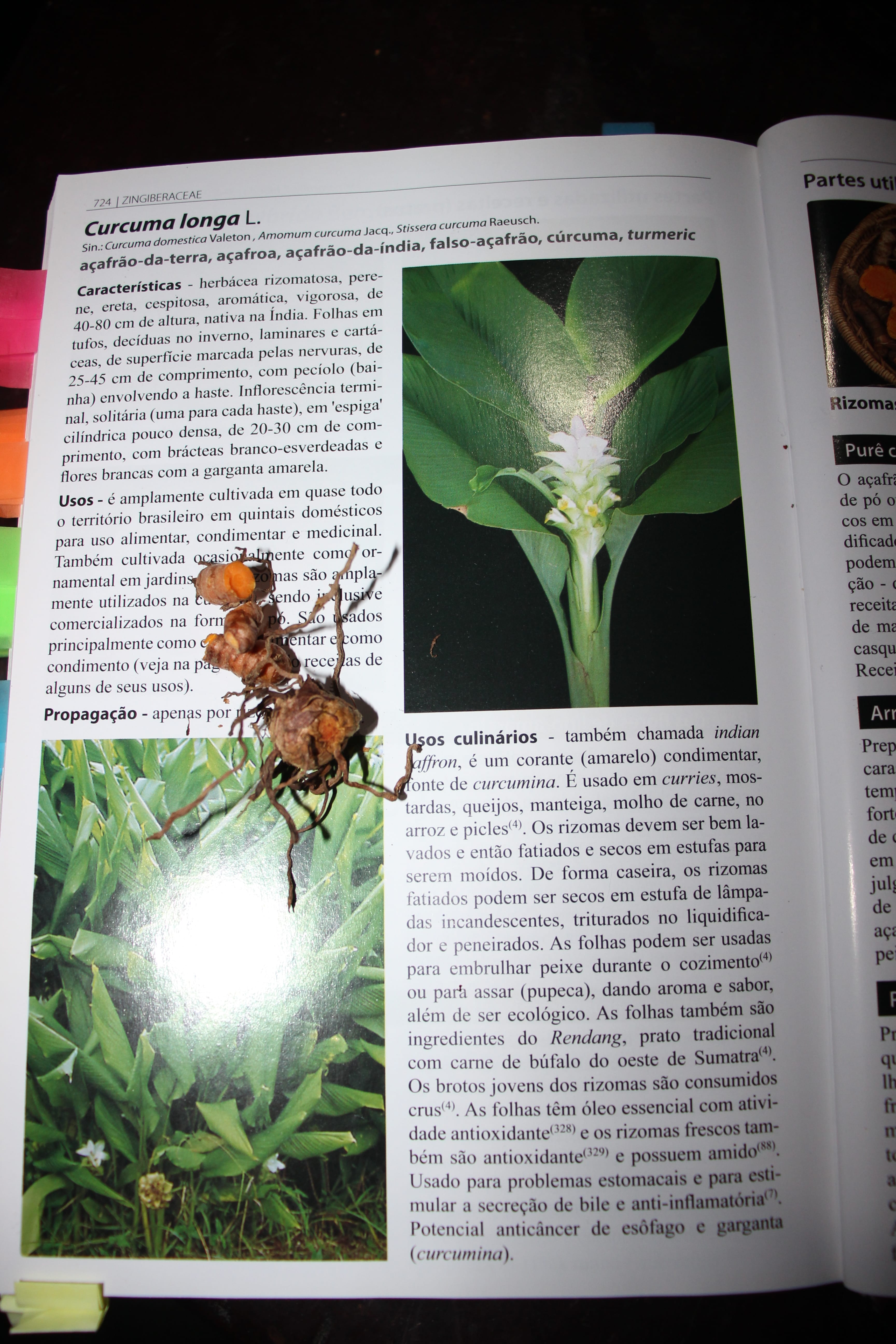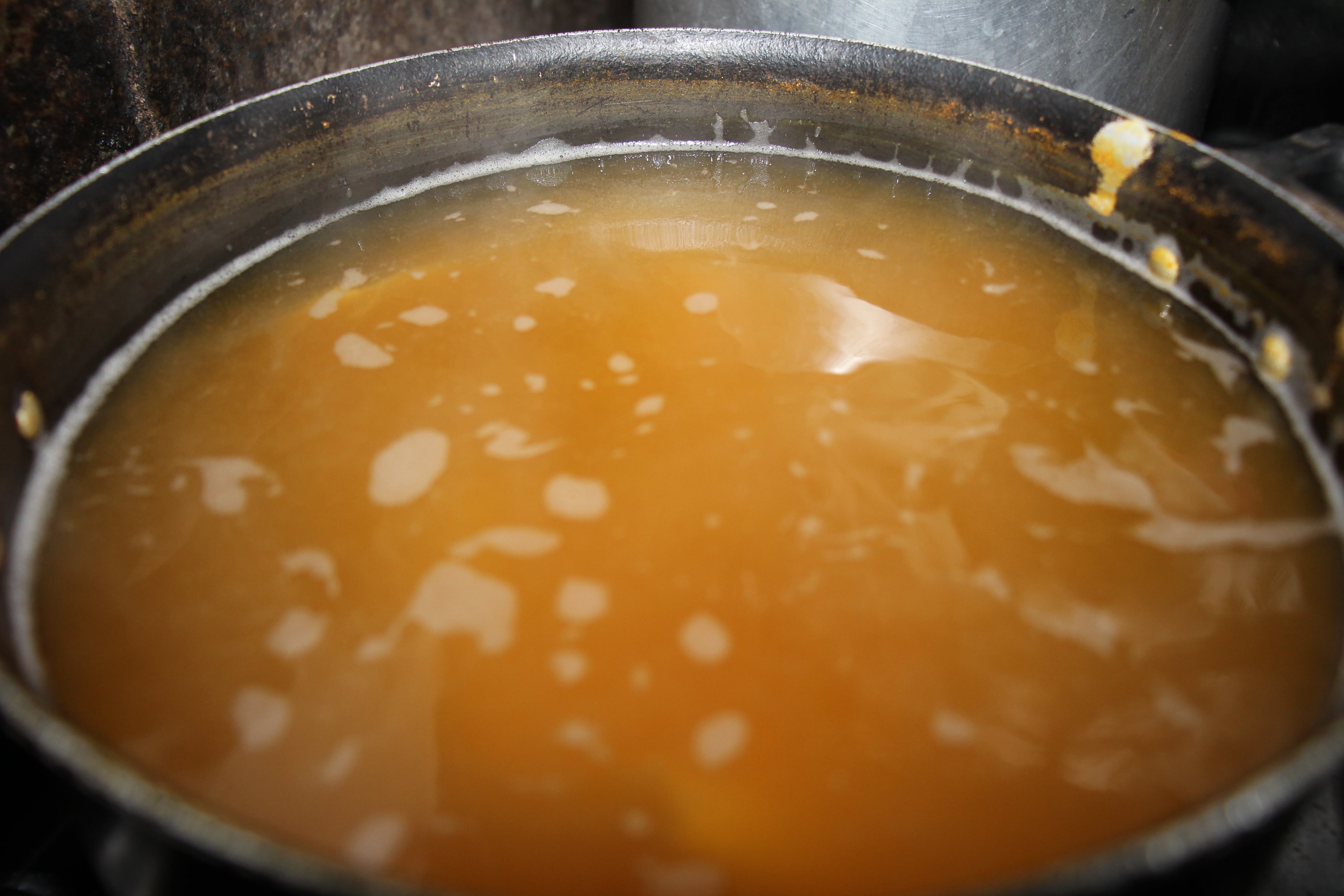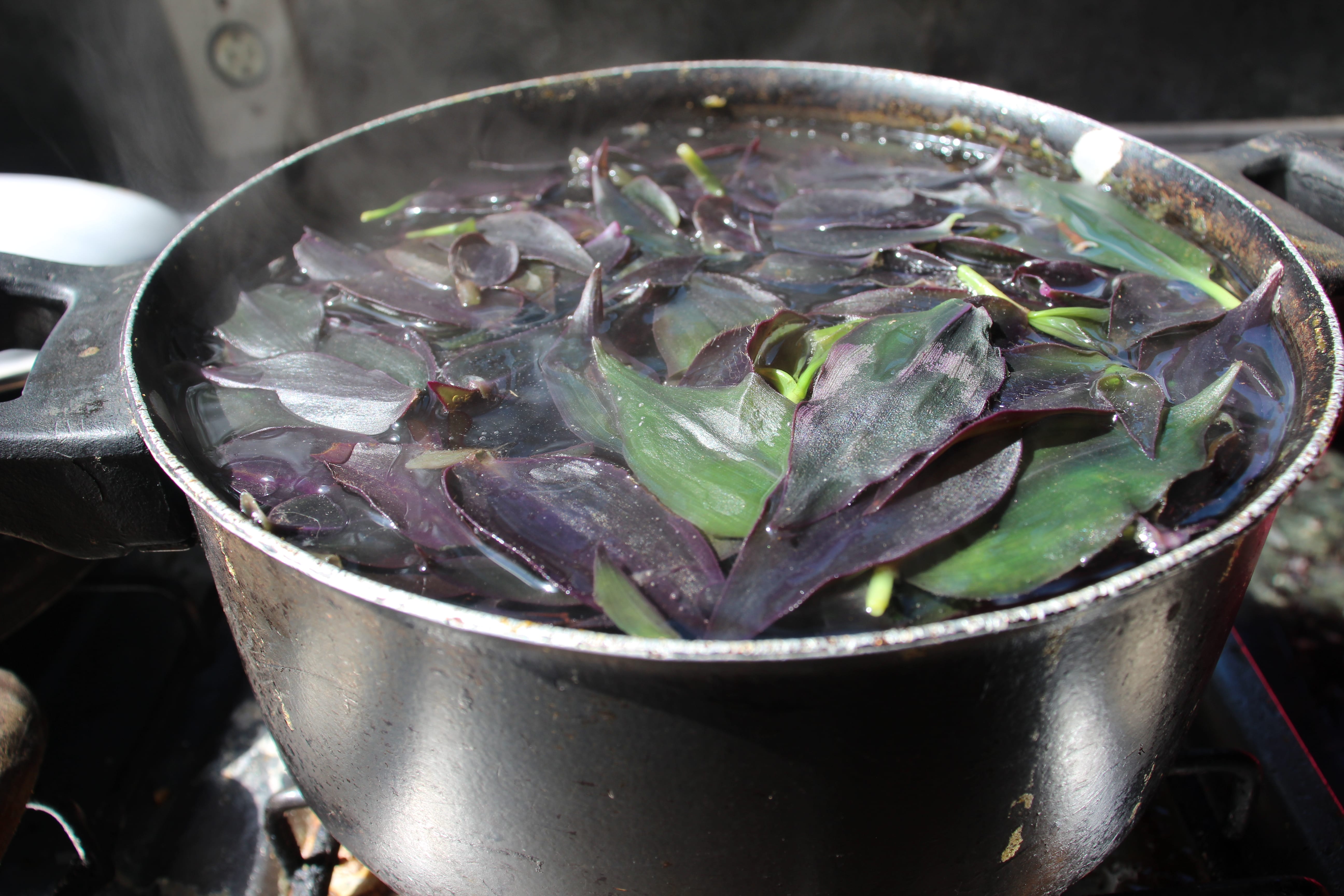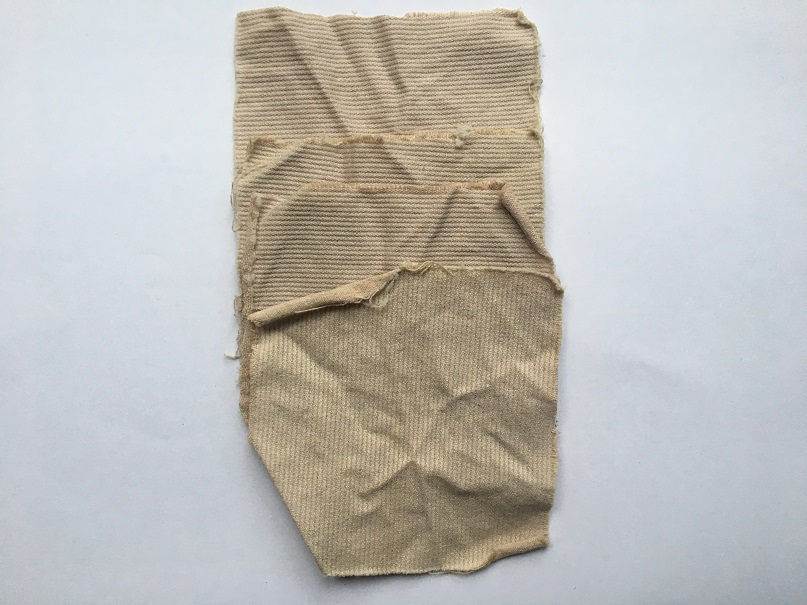4. BIOCHROMES¶
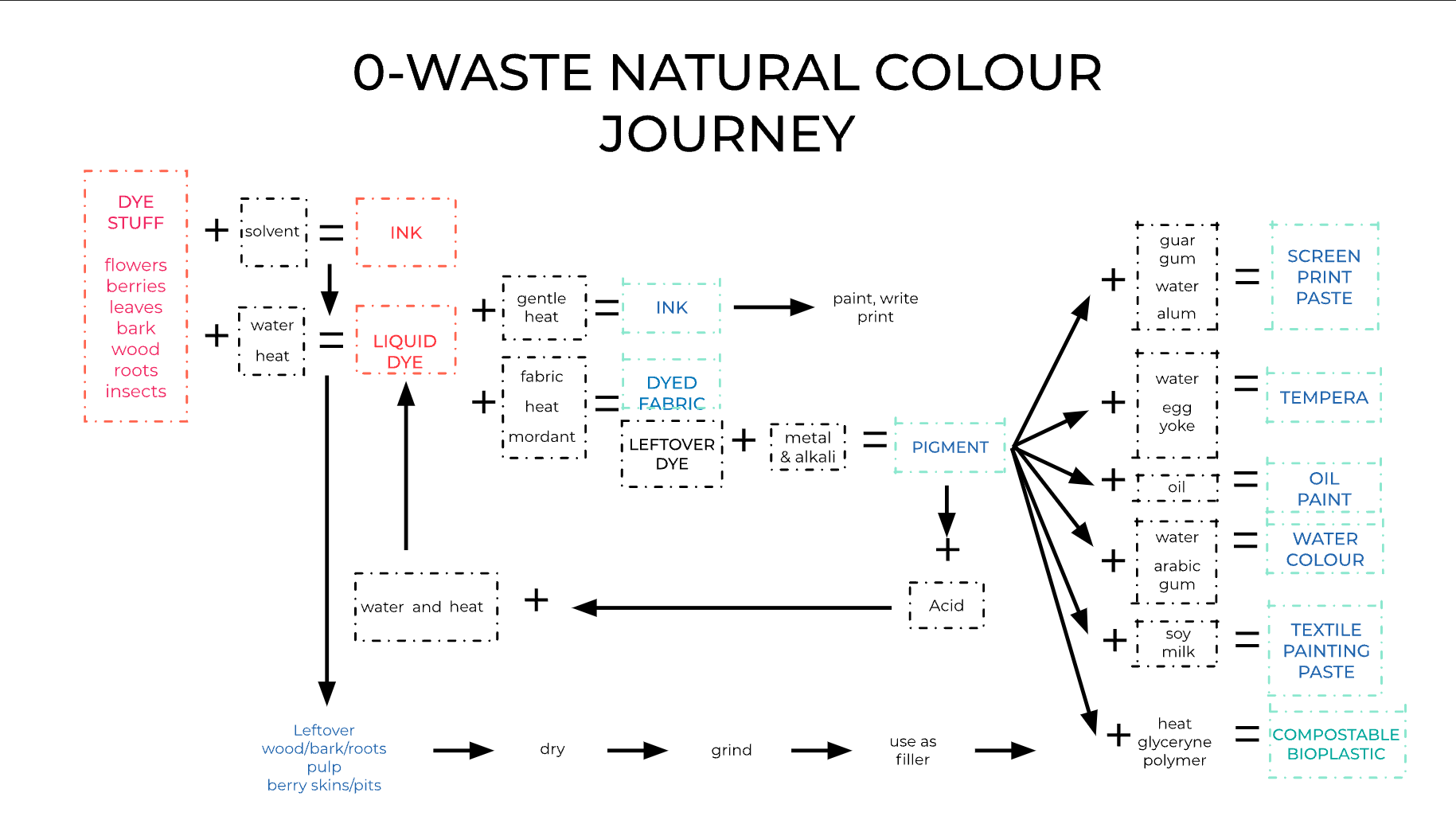
INSPIRATION¶
Kiri Miyazaki

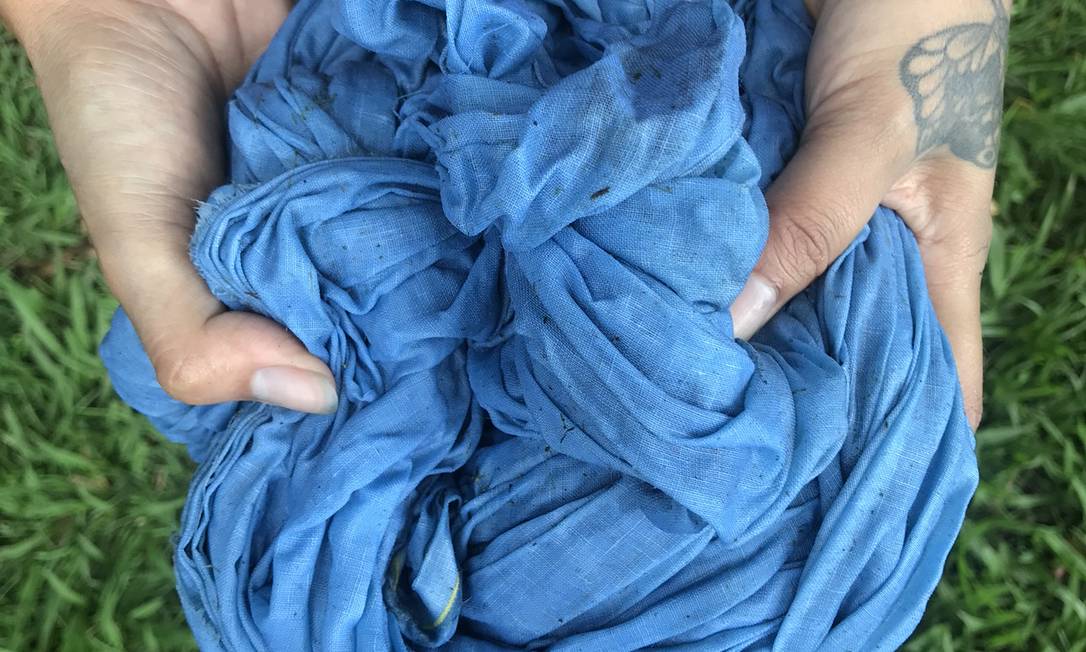
Flávia Aranha


NATURAL DYEING¶
Process¶
| Stage | Step |
|---|---|
| PLANNING | |
| 1 | Weigh the fabrics and fibers |
| 2 | Calculate tannin, cleaning agent, mordant and dye |
| 3 | Weigh tannins, mordants and dyes |
| SCOURING | |
| 4 | Combine water with cleaning agent |
| 5 | Heat, boil, stir and add fiber |
| 6 | Remove, strain and rinse |
| TANNING | |
| 7 | Combine water with TANIN |
| 8 | Heat, boil and add fiber |
| 9 | remove, strain and rinse |
| MORDANTING | |
| 10 | Combine water with mordant |
| 11 | Heat, boil, stir and add fiber |
| 12 | Remove and rinse |
| DYE BATH | |
| 13 | Combine dyes and vehicles |
| 14 | Boil, stir and strain |
| 15 | Add fibers in paint bath |
Preparing the Material to Dye¶
I cut each sample of plant fibers (Natural 100% Cotton) and animal fibers (100% Silk) in sizes 9 x 12 cm.
Scouring¶
To remove waxes and oils present in the fibers it is necessary to clean them (Purge). I used a recipe from Angela to produce a natural detergent.
Natural Detergent Recipe
Ingredients
200g of pure coconut soap and grated
50 ml of alchool 46%
3 soup spoons (ss) of Sodium Bicarbonate
Filtered water to 3l or (3000ml)
How to do
Mix the grated coconut soap with the water
in a stainless steel or aluminum pan,
and put to boil in a electric or gas cooker.
I've used a portable one very practical.
The bath to wash the fibers must have a proportion of 30 ml for each gram of dry fiber. After discovering the amount of bath, I mixed this liquid with 5% of the natural detergent.
Purge
01. Wet the fabrics in pure water and at room temperature,
if it is too cold, break the temperature
with a little warm water,
as animal fiber fabrics suffer from thermal shock.
02. Insert one by one in the heated soap bath ,
taking care for don'tlet bubles inside the fabrics,
stir with wooden spoon gently, and let it heat:
For Animal Fibers do not let it boil,
and let it in the bath, stiring gently for 10 min.
For the Vegetal Fibers you should let the bath boil
and let in the bath for 40 min
boiling and stiring from time to time.
03. Remove the fabric frim the bath,
first to a dry bowl, after with cold water.
04. Squeeze the fabrics and let then dry over a burlap.
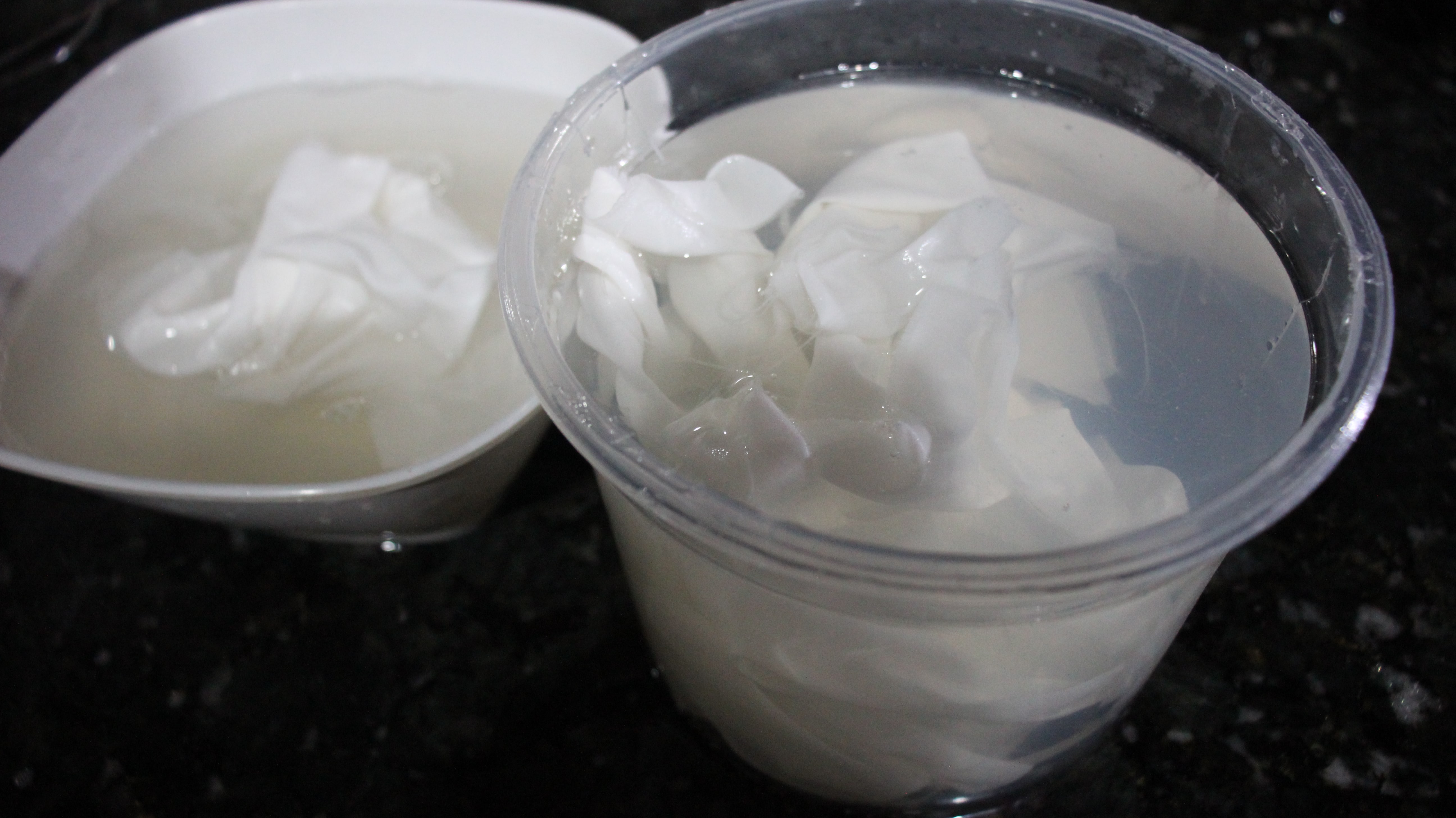
Mordant¶
In order for the fibers to receive and assimilate the vegetable dye (more resistant to washing and to the sun) it was necessary to use a mordant. Animal fibers such as wool and silk adhere more easily to dyes than vegetable fibers such as cotton and linen.
After the fiber has been purged (cleaned) the next step is to apply the mordant or pre-mordant. There are other possibilities: apply the mordant together with the dyeing or after the dyeing.
Tannin¶
A week ago before the lockdown was decreed in Brazil, I made an urban exodus from Rio de Janeiro to Penedo. Penedo is a city that looks like a neighborhood at the foot of Serra da Mantiqueira. In addition to the beautiful waterfalls, Penedo is surrounded by the Atlantic Forest and is neighboring the Itatiaia National Park, for this reason, there is a wide variety of birds in the locality and an incredible flora. In the street below my house there is a Bauhinia forficata cow's foot and it was from it that I collected the leaves that have tannin.
Dry cotton fabric
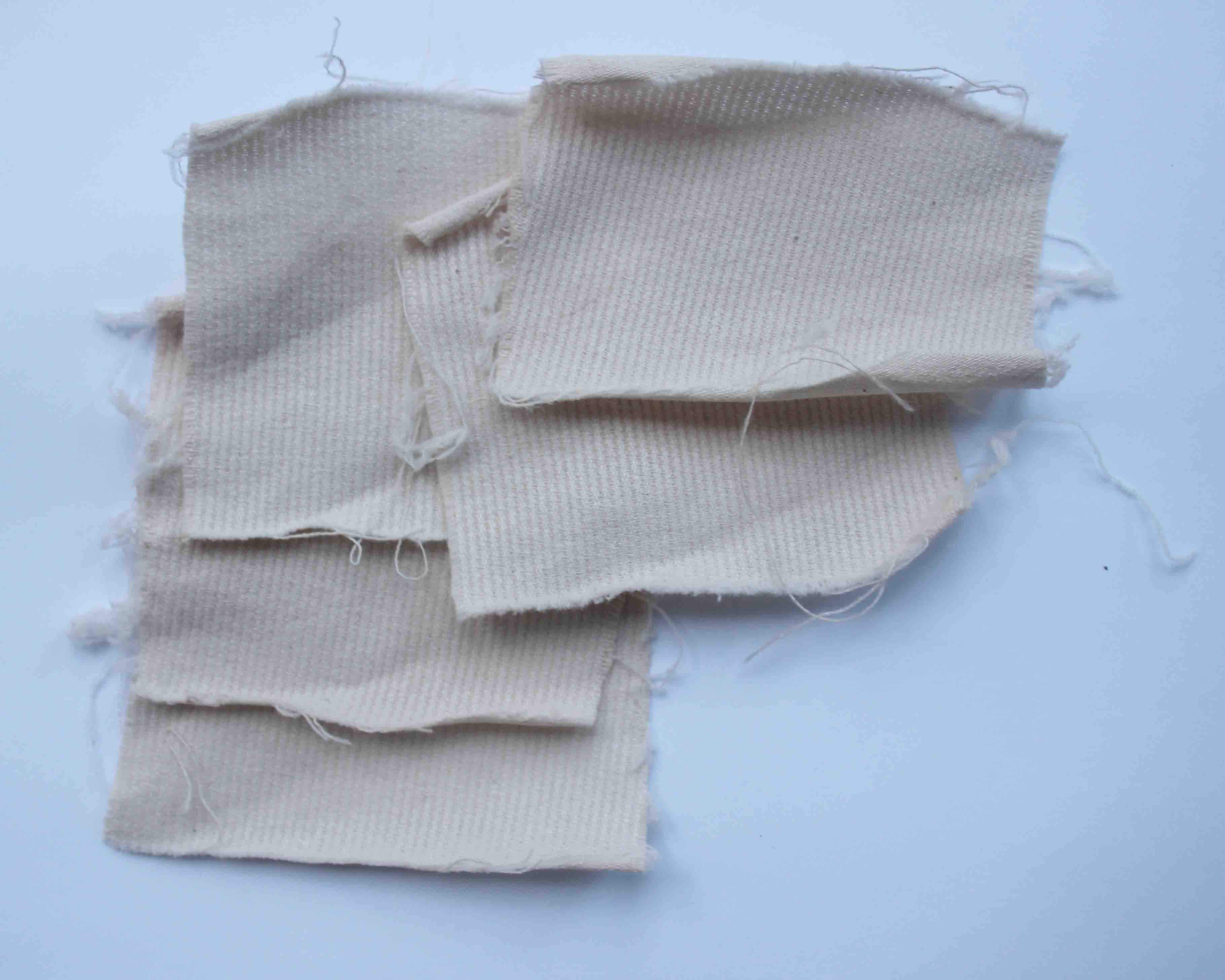
Iron Water¶
_Recipe_
Ingredients:
5l of water;
2 cups of vinegar;
1 cup of rusty nails;
Preparation:
Boil the ingredients for an hour and then let them rest for 24 hours.
Measurements: in relation to the weight of the fiber (fabric)¶
Measurements: in relation to the weight of the fiber (fabric)
I chose to use only natural mordants according to the proportions: alum - 15% alum 7% – tannic acid 15%
For this activity I tried to find a plant that grew spontaneously in my backyard. :yellow_heart: :purple_heart:
Saffron Rhizome Curcuma longa¶
Dye bath¶
1/8 wof Tradescantia leaves
Method of Preparation: Grate the turmeric root from the ground and before putting it in boiling water, dilute it in warm water.

| number | mordant |
|---|---|
| 1 | alum |
| 2 | iron water |
| 3 | alum+lemon |
| 4 | iron+lemon |
silk : saffron without mordant
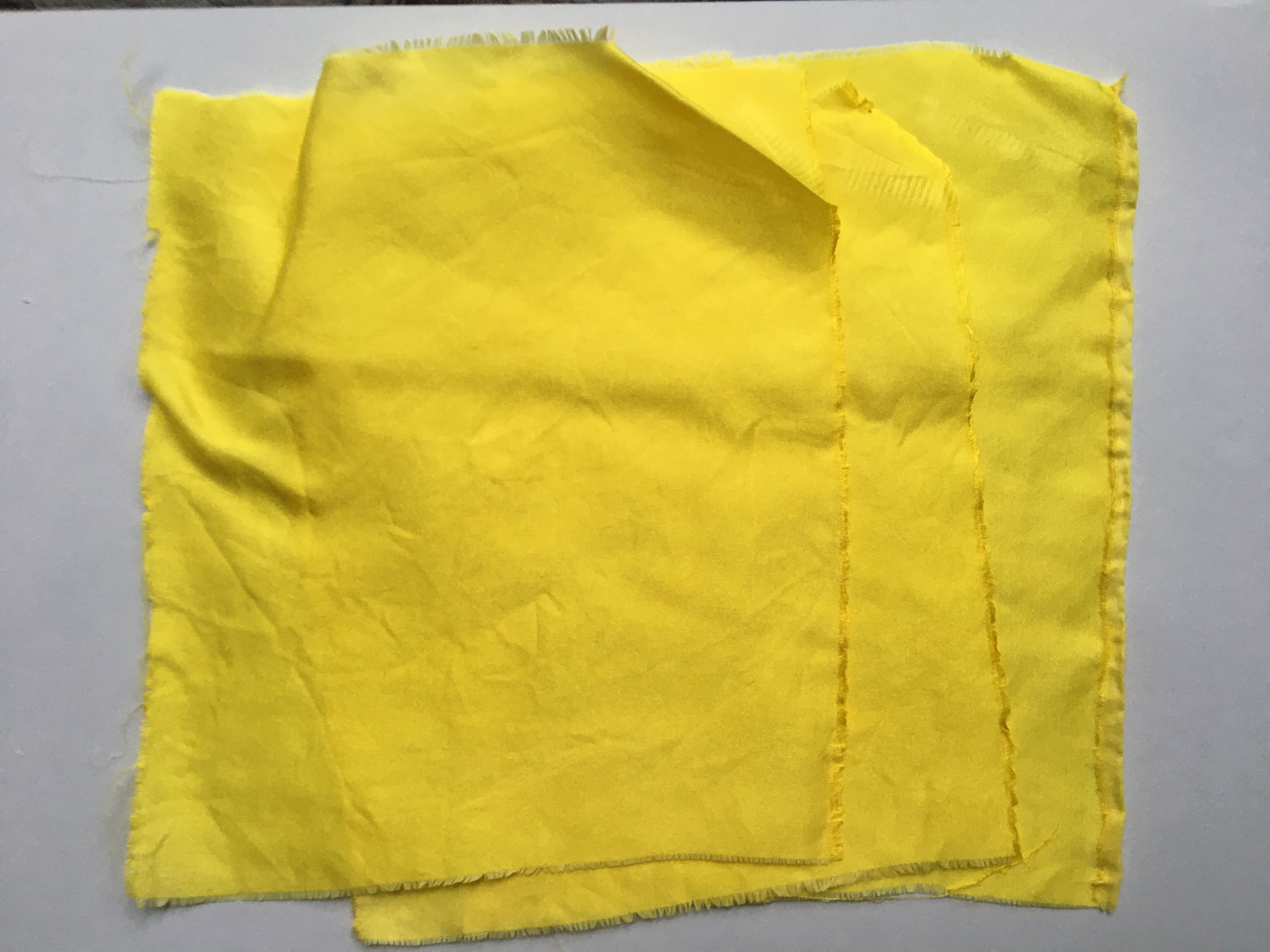
silk : saffron > mordants: alum + lemon

cotton : saffron > mordant: iron water
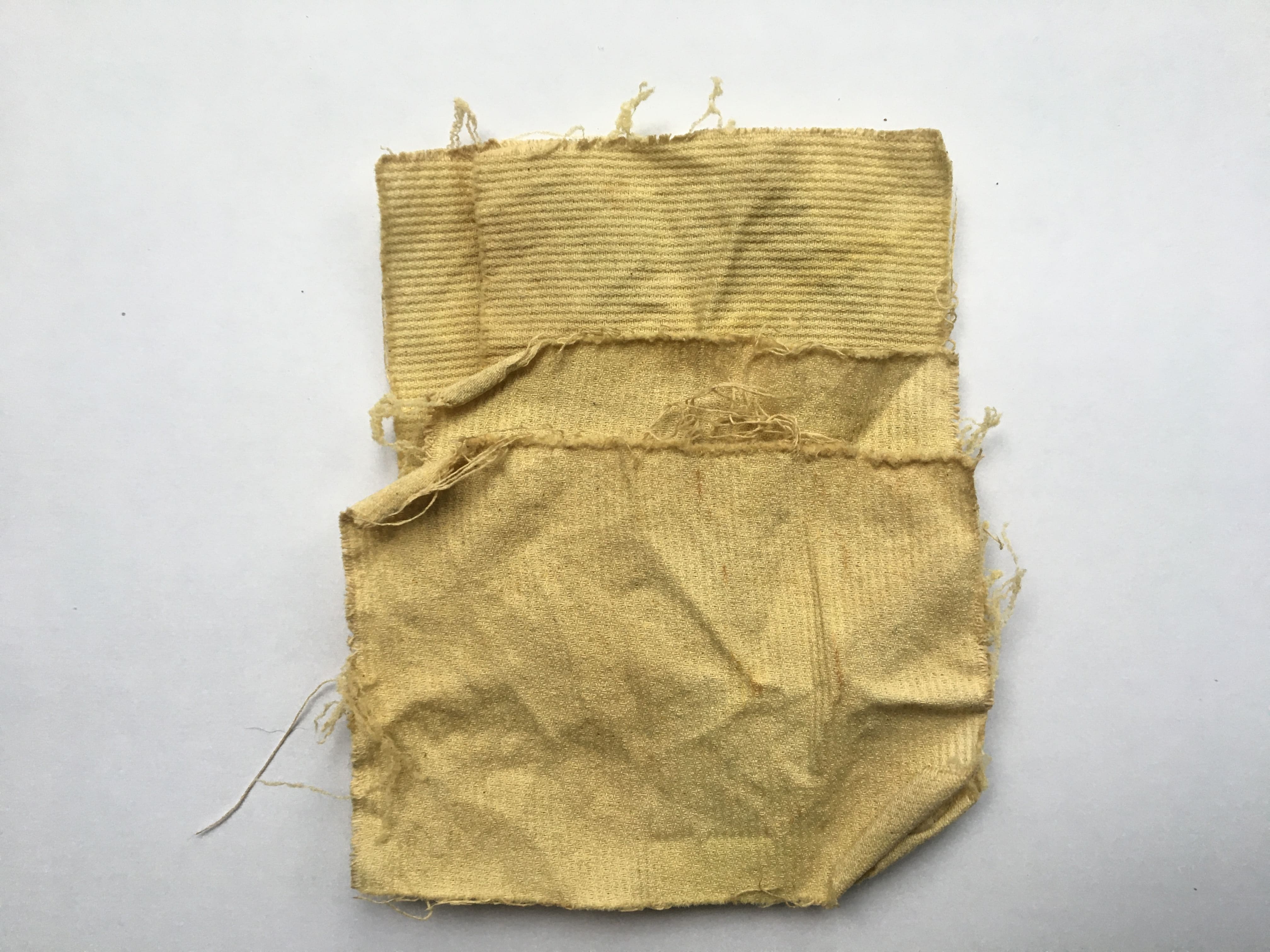
Trapoeraba-roxa Tradescantia pallida purpurea¶
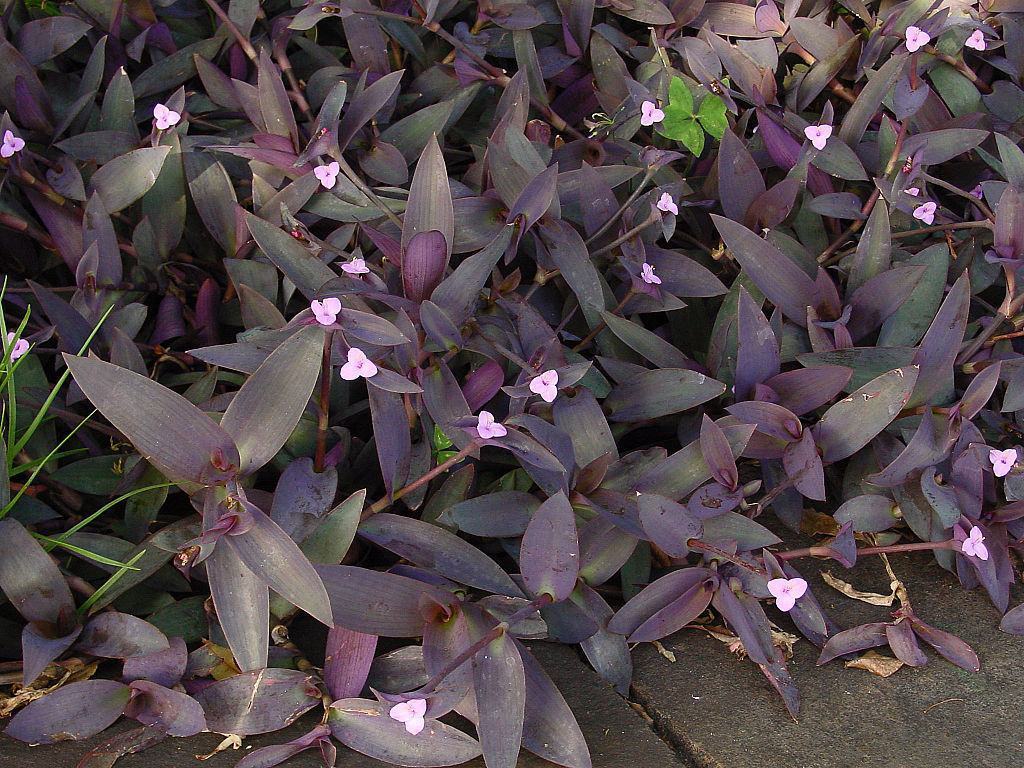
Dye bath¶
1/8 wof Tradescantia leaves
Method of Preparation: After macerating the leaves, I put them in boiling water and left for 60 minutes.


| letter | mordant |
|---|---|
| a | alum |
| b | alum+vinegar |
| c | iron water |
| d | alum+lemon |
| e | *dye bath without mordant |
cotton : trapoeraba > mordant: alum
silk : trapoeraba > mordant: alum
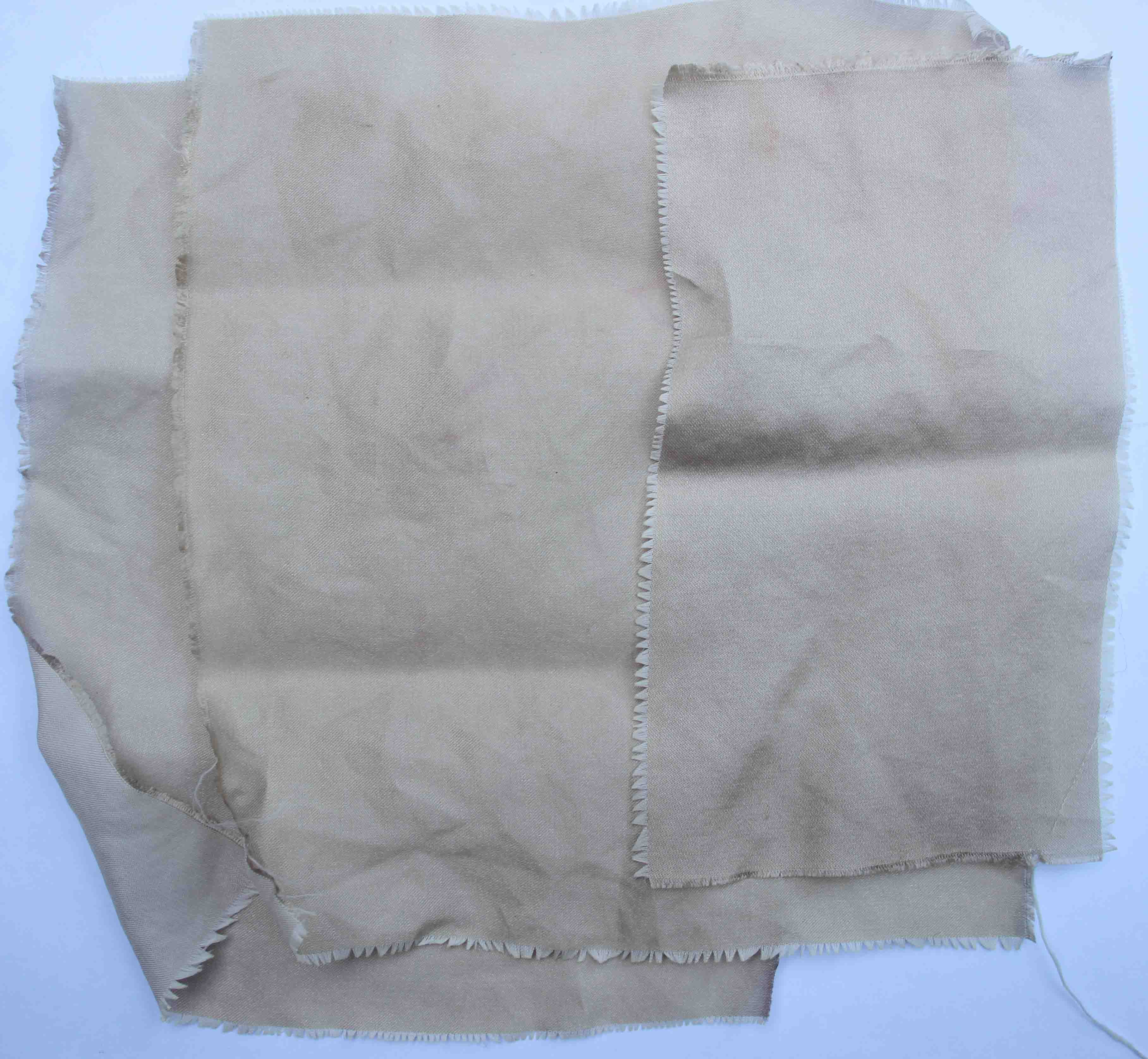
silk: trapoeraba > mordant: alum+lemon
Attention¶
In all the processes, purging, mordant and dyeing, it is important that the amount of water in the pan is sufficient to stir and move the fiber with ease, so that it receives the bath in its entirety.
That all utensils used in all processes are for the exclusive use of dyeing, as well as being careful to wear gloves.
The pan chosen to bathe and/or cook the dye can act as a mordant. The iron pan influences and changes the color, the copper pan makes certain tones more luminous and accentuates the green, the aluminum pan for dyes and fiber preparations that will receive alum mordant is indicated, the stainless steel pan does not influence nothing and therefore it is a good option for the clarity of the result obtained.
Pigments¶
Ingredients:
dye bath leftovers
sodium bicarbonate - 6g
alum - 18 g
hot water
Process:
I prepared two solutions:
1st Alum Solution: 18g of alum and mix with 100ml of hot water.
(Stir slowly until completely dissolved).
2nd Sodium bicarbonate solution:
6 g of sodium bicarbonate with 100 ml of hot water.
Then I added the first solution (alum) to the leftovers of
the dye bath. While stirring the dye bath with alum solution,
I very slowly added the sodium bicarbonate medium and waited
for the reaction.
I put a bowl to contain the foam that will run off after the reaction.
I let it rest overnight. Then I strained it with a coffee filter
and let the sediments that remained after straining the solution dry.
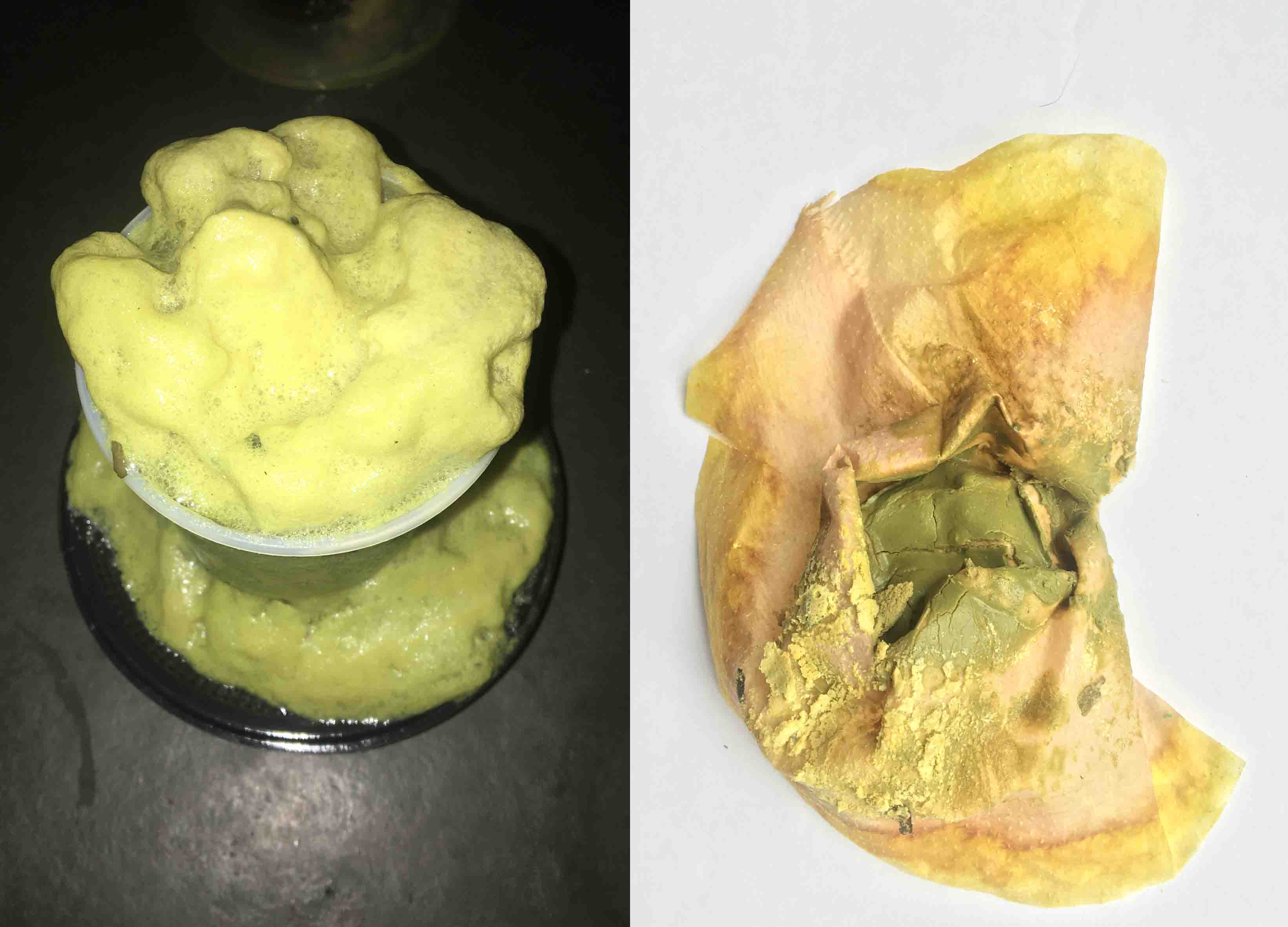
Research¶
Plantas Alimentícias Não Convencionais (PANC) No Brasil 2ª Edição
Biochromes - recycling a dye bath - Fabricademy
